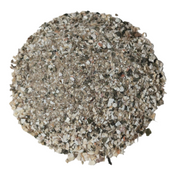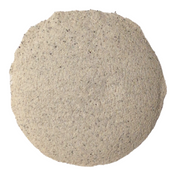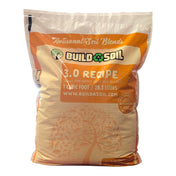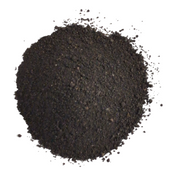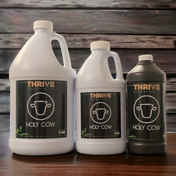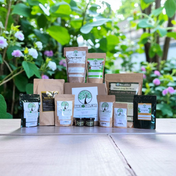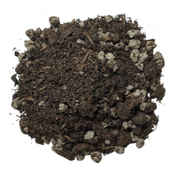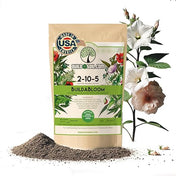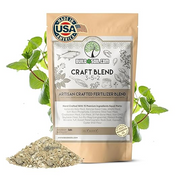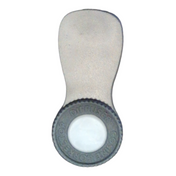I get asked questions about liming agents all the time and was excited to find this old quote from ClackamasCoots dug up by TreeDog on LivingOrganicSoil.org.
Here is the full Quote with a few updates by me.
"I just got back from a ride in the country to clear my head and I was thinking about the best way to help you with the calcium deal.
Here is a rundown on liming agents in general and what they contain.
1. Limestone - calcium carbonate
2. Dolomite Lime - Dolomitic lime is a rock. It can be quite pretty. It is calcium magnesium carbonate, CaMg(CO3)2. It has about 50% calcium carbonate and 40% magnesium carbonate, giving approximately 22% calcium and at least 11% magnesium.
3. Gypsum - elemental calcium (Ca) and sulphur in a the form of S04 meaning that it is elemental sulphur with 4 oxygen molecules attached which is important in the CeC paradigm. (Although Gypsum really isn't a liming agent.)
4. Oyster Shell Powder - calcium carbonate (CaCo3) - This product is not what it would appear from the name, i.e. it's not a product made from crushed oyster shells but rather it's a particular oyster shell mined from the San Francisco Bay from ancient sea deposits made up of very tiny and fragile oyster shells.
5. Crushed Oyster Shells - calcium carbonate (CaCo3) and this product is made from crushed oyster shells.
As you can see, all of these liming agents either contain elemental calcium or calcium carbonate and it's the carbonate which is used to correct acid conditions in a soil.
The reason that I do not recommend using dolomite lime is that it contains 2:1 calcium to magnesium. Where as our soil's are better with closer to 5:1 - 10:1 That isn't to say the magnesium isn't important - quite the opposite it's extremely important but magnesium has absolutely nothing to do as far as a liming agent.
Excessive magnesium will cause soils to bind up making it difficult for the plant's root hairs to move through the soil to exchange their hydrogen cation (+) for minerals, macro and micro nutrients.
In plant or algea based soil amendments like alfalfa meal and kelp meal, a review of the levels of calcium vs. magnesium show that it's 4 and 5x - quite the opposite of dolomite lime.
Calcium carbonate is water soluble while magnesium is not. You can use this to your advantage by using limestone in water as part of your irrigation program. I'd recommend about 1 tablespoon per 1 gallon of water. Stir, shake, stir, shake - then apply. This will provide your plants with the amount of calcium necessary to maintain health and growth vigor.
Crushed oyster shells is also pure calcium carbonate. It can be dissolved in water but that can take several days/few weeks. This is the product that chicken growers feed to their hens both for the calcium content (to insure strong egg shells) but also for grit used the hen's gizzard to digest grains.
Oyster shell powder is pure calcium carbonate and is instantly dissolved in water.
You can use apple cider vinegar and soak the crushed oyster shells to extract the calcium carbonate. By volume you would want to mix 1x crushed oyster shells (or egg shells) with 3x apple cider vinegar and let it brew for 2 - 3 weeks. The vinegar will extract the calcium from the eggs shells in a concentrated form. Mix 1/4 cup of the vinegar with 1 gallon of water and apply to your soil.
And if you take egg shells and put them into a large pan with your Weber BBQ fired up and heat them until they turn every shade of dark brown to black and then take them and crush them and do the same deal with the crushed oyster shells, you'll end up with calcium phosphate. Apply at the same rate noted above for the crushed oyster shells. You can also process the crushed oyster shell the same way - heating until charred and then distilling the calcium out with apple cider vinegar.
While it's true that the good ol' N-P-K deal dominates the cannabis growing meme, in the world of soil science the basic study is often about the building-block cations: Calcium (Ca+2), Magnesium (Mg+2), Potassium (K+1) and Sodium (Na+1) and the acidic cations, Hydrogen (H+1) and Aluminum (Al+3)
HTH
LD "
I like this quote because it's simple and straight forward. If anyone wants more info, this brief blog will give them the info to start doing more research on their own.
If you like stuff like this, then subscribe to our blog or leave a comment here and tell us!!
Thanks for reading,
Jeremy Silva

